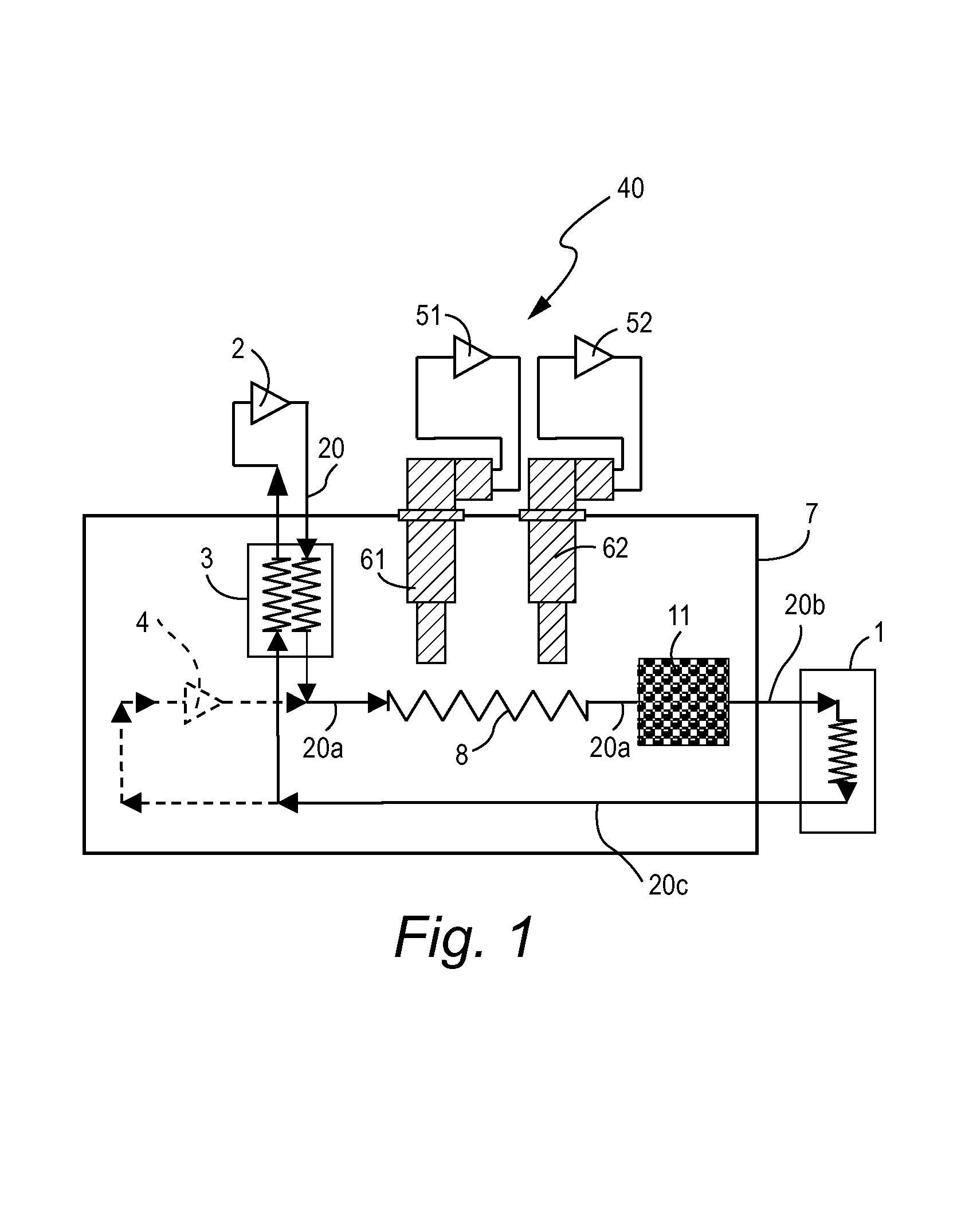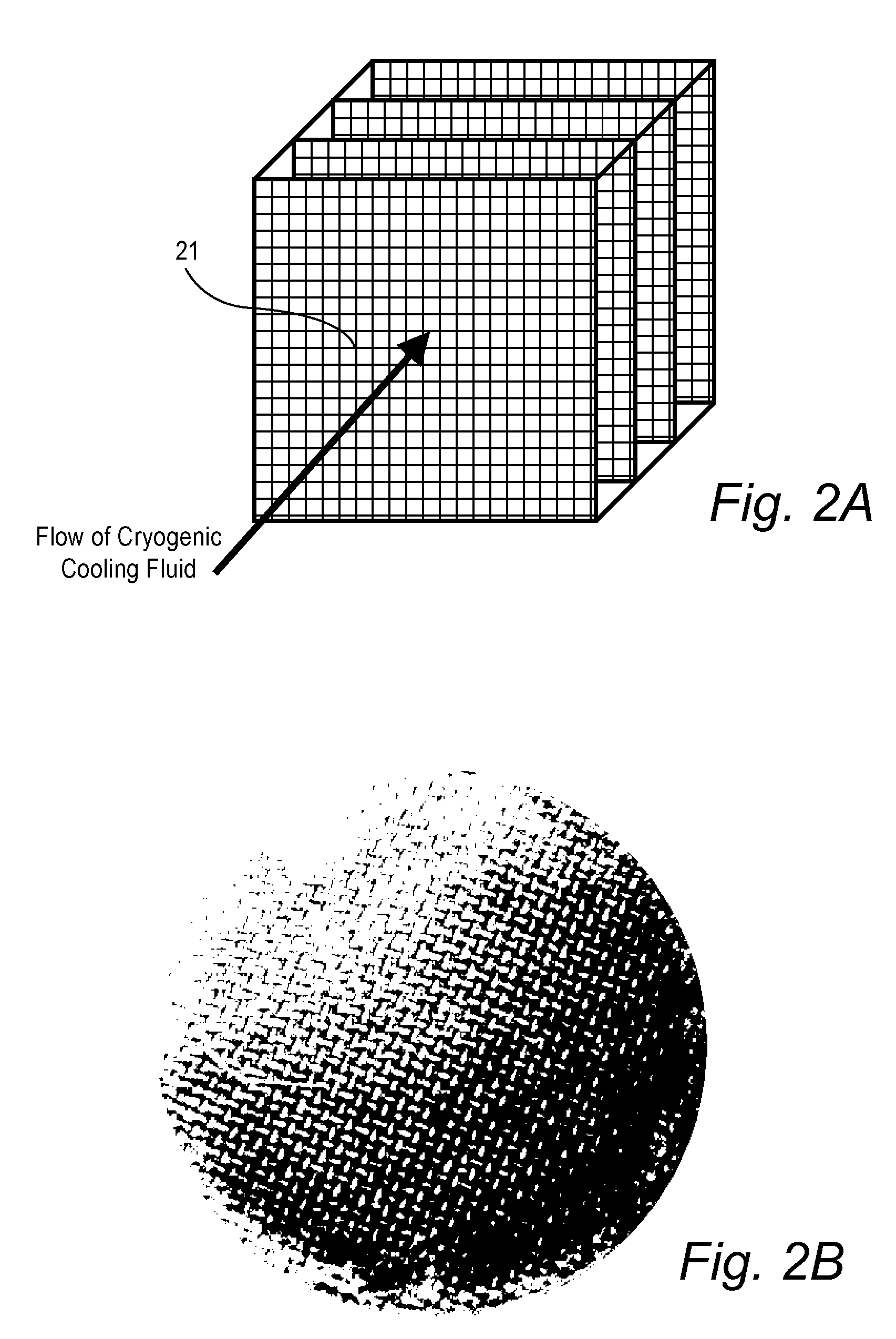Cryogenic cooling system and method with cold storage device
a cryogenic refrigerator and cold storage technology, applied in the field of cryogenic refrigeration system, can solve the problems of affecting the operation of the backup refrigerator, affecting the operation of the cooling system, and requiring repair or replacement, so as to prevent the temperature of the thermal load from rising, reduce the pressure, and reduce the complexity of control
- Summary
- Abstract
- Description
- Claims
- Application Information
AI Technical Summary
Benefits of technology
Problems solved by technology
Method used
Image
Examples
Embodiment Construction
[0024]FIG. 1 is a schematic diagram of a cryogenic refrigeration system 40 for cooling thermal load 1. Thermal load 1 may be, for example, superconducting field winding coils of a rotor in a synchronous electric generator. While the exemplary embodiments below describe cryogenic refrigeration systems using a compressible gas as a cooling fluid, another cooling fluid such as a liquid may instead be used.
[0025]The refrigeration system 40 includes a heat exchanger 3 and a re-circulation device 2 such as a re-circulating compressor (when the cryogenic cooling fluid is a gas), fan or pump. While not shown in FIG. 1, a redundant (i.e., backup) re-circulation device can be connected in parallel with re-circulation device 2 to increase reliability. Re-circulation device 2 compresses and supplies warm temperature gas (e.g., 300°K) to heat exchanger 3. Re-circulation device 2 may include a storage container of cooling fluid. Heat exchanger 3 cools the gas received from re-circulation device 2...
PUM
 Login to View More
Login to View More Abstract
Description
Claims
Application Information
 Login to View More
Login to View More - R&D
- Intellectual Property
- Life Sciences
- Materials
- Tech Scout
- Unparalleled Data Quality
- Higher Quality Content
- 60% Fewer Hallucinations
Browse by: Latest US Patents, China's latest patents, Technical Efficacy Thesaurus, Application Domain, Technology Topic, Popular Technical Reports.
© 2025 PatSnap. All rights reserved.Legal|Privacy policy|Modern Slavery Act Transparency Statement|Sitemap|About US| Contact US: help@patsnap.com



